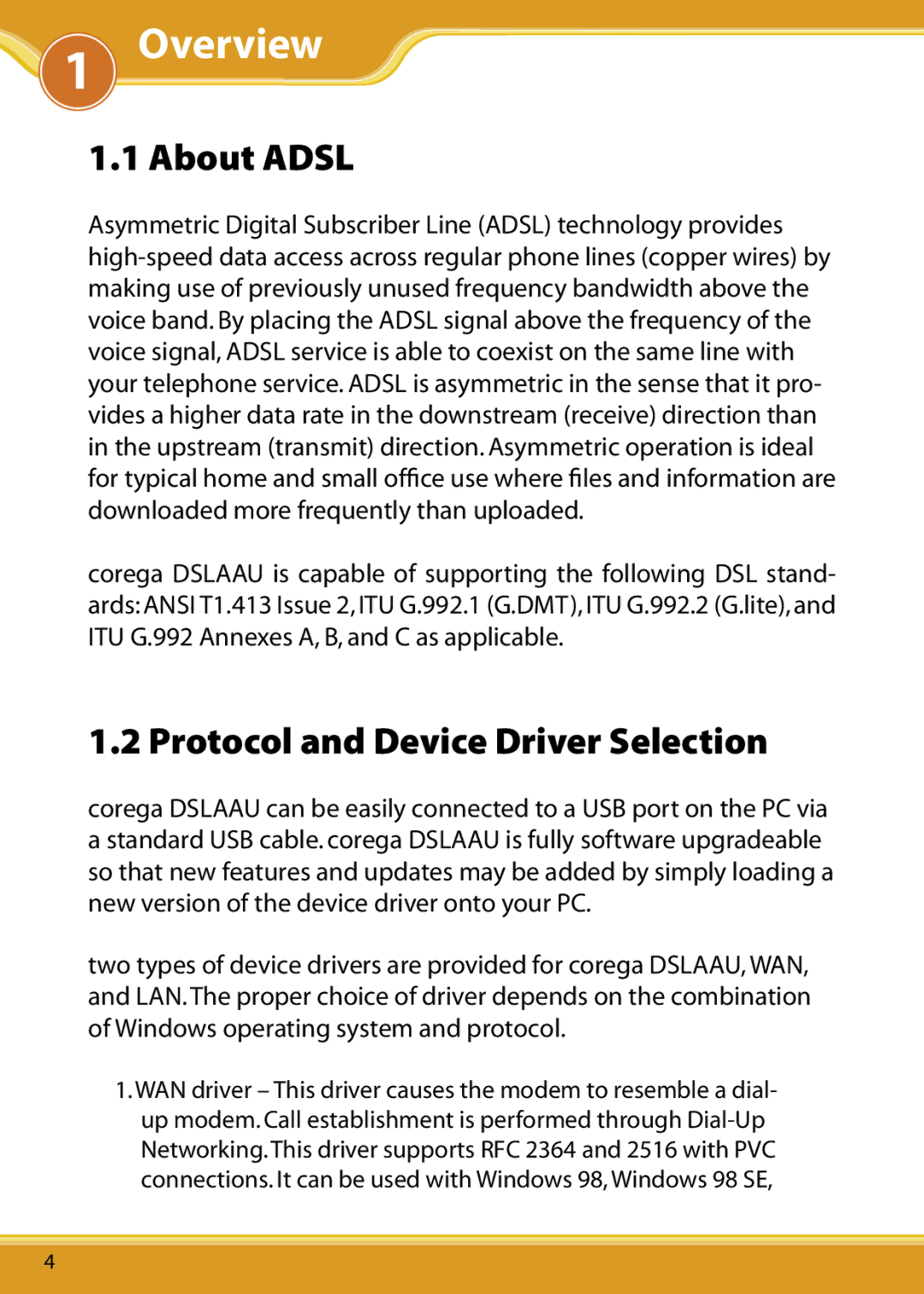
 Overview
Overview
DSLAAU1 Manual
1.1 About ADSL
Asymmetric Digital Subscriber Line (ADSL) technology provides
corega DSLAAU is capable of supporting the following DSL stand- ards: ANSI T1.413 Issue 2, ITU G.992.1 (G.DMT), ITU G.992.2 (G.lite), and ITU G.992 Annexes A, B, and C as applicable.
1.2 Protocol and Device Driver Selection
corega DSLAAU can be easily connected to a USB port on the PC via a standard USB cable. corega DSLAAU is fully software upgradeable so that new features and updates may be added by simply loading a new version of the device driver onto your PC.
two types of device drivers are provided for corega DSLAAU, WAN, and LAN.The proper choice of driver depends on the combination of Windows operating system and protocol.
1.WAN driver – This driver causes the modem to resemble a dial- up modem. Call establishment is performed through
4
